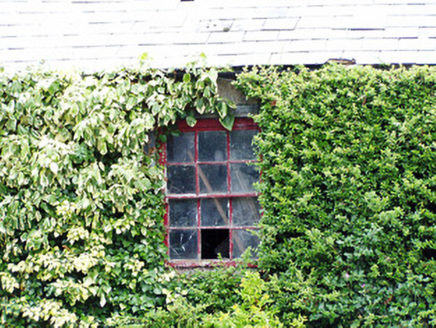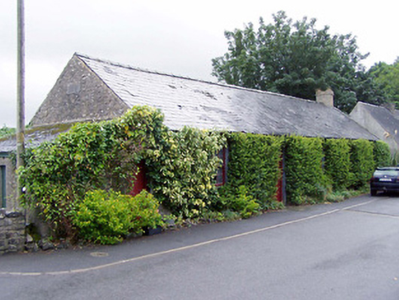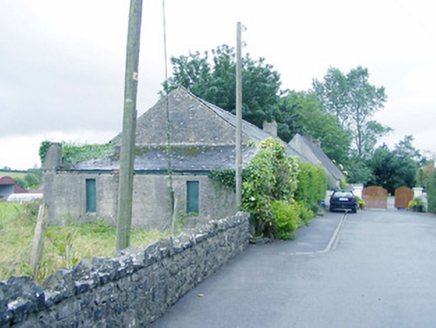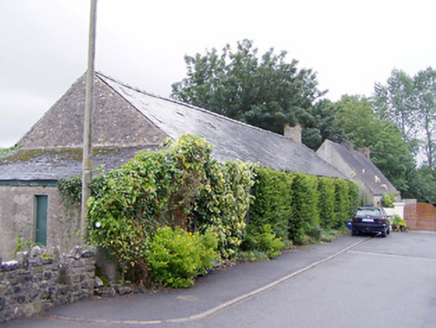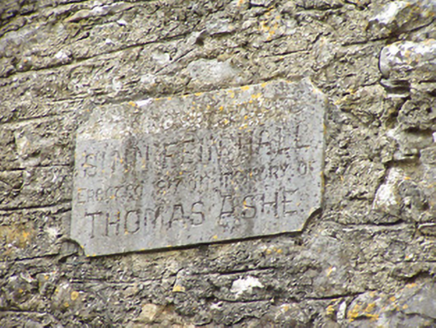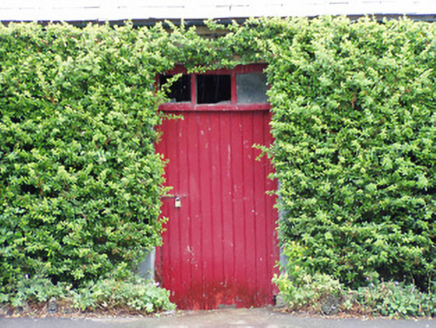Survey Data
Reg No
13402114
Rating
Regional
Categories of Special Interest
Architectural, Social
Previous Name
Sinn Féin Hall
Original Use
Hall
Date
1915 - 1920
Coordinates
204106, 259577
Date Recorded
04/08/2005
Date Updated
--/--/--
Description
Detached five-bay single-storey former Sinn Fein hall, built 1917, having lean-to to the northeast elevation. Possibly incorporating fabric of earlier building to site. Now in use as an outbuilding. Pitched natural slate roof with rendered chimneystack to the southwest gable end. Roughcast render over roughly coursed rubble limestone masonry walls with carved limestone plaque to northeast elevation. Square-headed window openings with six-over-six timber sliding sash windows and concrete sills. Square-headed door opening having glazed overlight and timber battened door. Fronts onto the road. Located down small lane to the south end of the village of Newtown-Cashel. Vernacular house adjacent to the southwest
Appraisal
This modest early-twentieth century former Sinn Fein hall retains its early form and character. The early to mid twentieth century saw a resurgence in the popularity of small pane windows such as the six-over-six timber sliding sash windows as utilised in this building. Of particular note is the carved limestone plaque to the northeast elevation, which was erected in 1917 and commemorates the death of Thomas Ashe (1885 – 1917), who was a battalion commander during the 1916 Easter Rising. Ashe was captured at nearby Ballinalee in August 1917, whilst giving a public speech, and later died whilst on hunger strike on the 25th of September. It is possible that this building was extant in 1917 and was converted to a new use. This building was apparently opened on St. Patrick’s Day 1918. Sinn Finn was popular in Longford at this time and Joe McGuinness, a political prisoner at the time, was elected a Sinn Fein MP for south County Longford in 1917 and 1918. The hall was built by a newly formed Sinn Fein club with voluntary local labour. This simple building is an interesting reminder of the Republican movement in Longford during the early-twentieth century and it adds historic appeal to the village of Newtown-Cashel.
